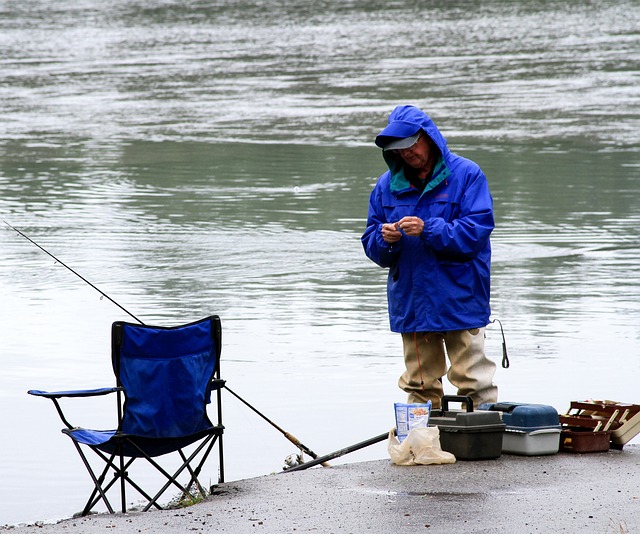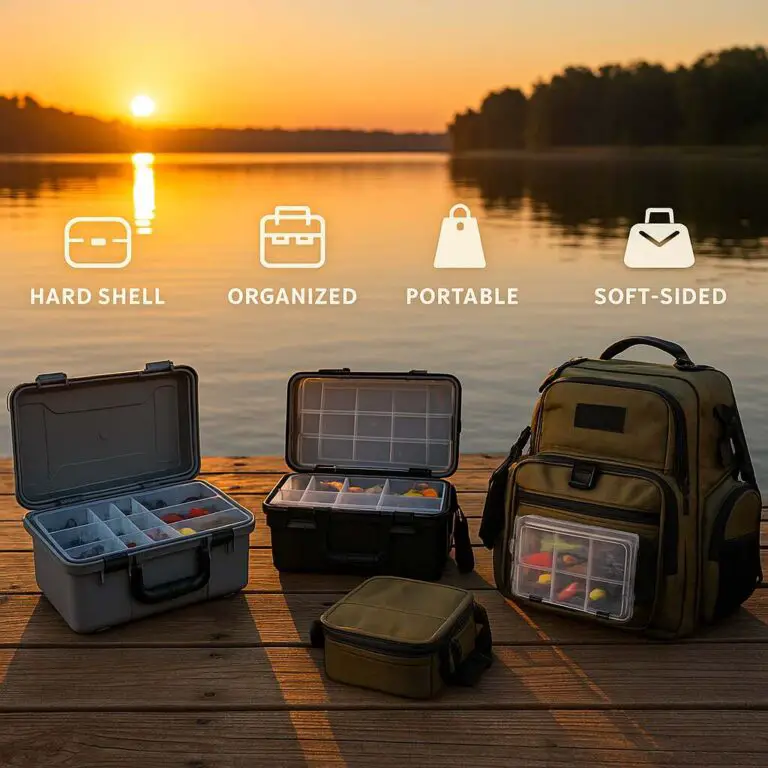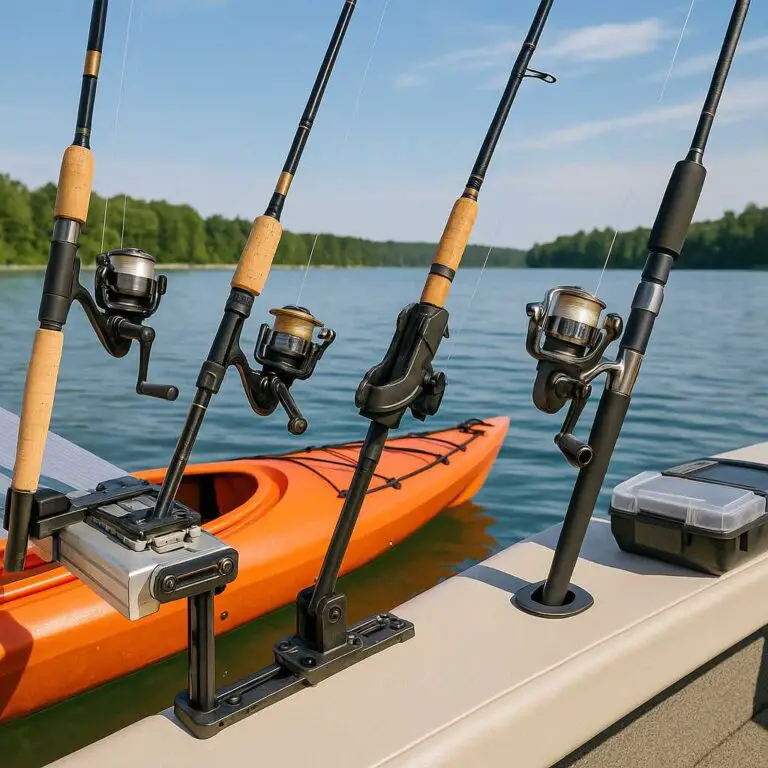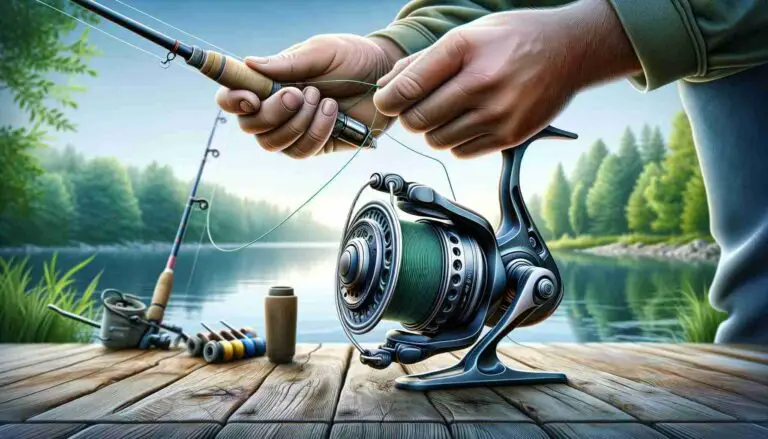Fishing reels are essential tools for any angler, whether professional or recreational. They play a crucial role in ensuring successful fishing trips by enabling efficient casting, reeling, and retrieving of fish. However, exposure to water can cause significant damage to fishing reels, compromising their performance and durability.
In this guide, I will explore the impact of water damage on fishing reels, including its causes, signs, prevention, and repair. By the end of this guide, you will have a better understanding of how to protect your fishing reels from water damage and prolong their lifespan and functionality.
Can Fishing Reels Get Wet?
Yes, fishing reels can get wet, especially if they are exposed to water during use. However, excessive exposure to water can lead to water damage, which can compromise the performance and lifespan of the fishing reel. It’s important to take steps to prevent water damage, such as proper maintenance, storage, and using reel covers and cases. If the fishing reel does get wet, it’s recommended to dry it thoroughly and inspect it for signs of water damage.
Does Rain Hurt Fishing Reels?
Rain can potentially hurt fishing reels if they are exposed to it for extended periods. The moisture from the rain can seep into the reel’s internal components, leading to rust and corrosion over time. However, light rain or brief exposure to rain is unlikely to cause significant damage to the fishing reel, especially if it’s dried properly afterward. It’s still recommended to take precautions such as using a reel cover or storing the fishing reel in a dry place during rainy weather to prevent any potential damage.
Causes of Water Damage to Fishing Reels
Fishing reels are often exposed to water, whether it’s saltwater or freshwater. This exposure can lead to various types of damage to the reels. Here are some of the common causes of water damage to fishing reels:
- Exposure to saltwater or freshwater: Saltwater is particularly damaging to fishing reels as it contains high levels of salt that can cause rust and corrosion. However, freshwater can also cause damage, especially if it contains impurities that can accelerate the corrosion process.
- Fishing in rainy or humid conditions: Fishing in rain or humid conditions can also expose your fishing reels to water damage. Moisture can seep into the reel’s internal components, leading to rust and corrosion.
- Accidental Submersion in Water: Accidental submersion of fishing reels in water can also cause significant damage. This can happen if you accidentally drop the reel into the water or if the boat capsizes.
- Poor maintenance and storage practices: Poor maintenance and storage practices can also contribute to water damage to fishing reels. For example, failure to clean and lubricate the reel after use can cause dirt and debris to accumulate, leading to damage over time. Storing reels in damp areas can also promote corrosion and rust.
Signs of Water Damage to Fishing Reels
It’s important to be aware of the signs of water damage to fishing reels so that you can take appropriate action before the damage worsens. Here are five common signs to look out for:
- Rust and corrosion: One of the most apparent signs of water damage to fishing reels is rust and corrosion. This can be seen on the external parts of the reel, such as the handle, spool, and bail arm. If left unaddressed, rust and corrosion can spread to the internal components of the reel, affecting its performance.
- Reduced reel performance: Water damage can affect the performance of fishing reels, making it harder to cast, reel, and retrieve fish. You may notice that the reel feels stiff or that the drag isn’t working correctly.
- Stiffness in the reel handle: If the reel handle feels stiff, it may be a sign of water damage. This can make it challenging to reel in fish, especially if they are large.
- Strange noises and vibrations: Water damage can cause unusual noises and vibrations in the reel. This can be a sign that the internal components of the reel are damaged and need repair or replacement.
- Drag issues: Water damage can also affect the drag system of the reel, making it difficult to control the fish when reeling it in. You may notice that the fish is slipping or that the drag isn’t working correctly.
Prevention of Water Damage to Fishing Reels
Preventing water damage to fishing reels is essential to ensure their longevity and functionality. Here are 5 ways to prevent water damage to your fishing reels:
- Choosing the right type of reel for your fishing needs: Different types of fishing reels are designed for different types of fishing, and some are better suited to handle water exposure than others. When selecting a reel, consider the type of fishing you’ll be doing and choose a reel that can handle the conditions.
- Regular cleaning and maintenance of your fishing reels: Cleaning and maintaining your fishing reels regularly can help prevent water damage. After each use, rinse the reel with fresh water and dry it thoroughly. Use a toothbrush or soft cloth to remove any dirt or debris that may have accumulated.
- Proper storage practices: Storing your fishing reels correctly can help prevent water damage. Avoid storing them in damp areas or places where they may be exposed to moisture. Instead, store them in a dry, cool place.
- Use of reel covers and cases: Using reel covers or cases can help protect your fishing reels from water damage. These covers are designed to fit snugly over the reels, preventing water from getting inside.
- Lubrication of the reel components: Lubricating your fishing reels regularly can help protect them from water damage. Apply a small amount of reel oil or grease to the moving parts of the reel to keep them lubricated and protected from moisture.
How to Repair Water-Damaged Fishing Reels
If you do experience water damage to your fishing reels, there are steps you can take to repair them. Here’s how to repair water-damaged fishing reels in 5 steps:
- Disassembly of the reel: The first step in repairing a water-damaged fishing reel is to disassemble it. Remove the spool, handle, and other external parts of the reel.
- Inspection of the damaged components: Inspects the internal components of the reel for signs of rust, corrosion, or damage. Look for any parts that may need to be replaced.
- Cleaning and lubrication of the components: Clean the internal components of the reel with a soft cloth or toothbrush and a solution of warm water and mild detergent. Dry the components thoroughly before applying reel oil or grease to the moving parts.
- Replacement of damaged parts: If any of the internal components of the reel are damaged beyond repair, they may need to be replaced. Contact the manufacturer or a professional fishing reel repair service to obtain replacement parts.
- Reassembly of the reel: Once you’ve cleaned and lubricated the internal components and replaced any damaged parts, reassemble the reel. Make sure that all the parts fit snugly and that the reel is working correctly.
Repairing water-damaged fishing reels can be challenging, and it’s essential to take care when disassembling and reassembling the reel. If you’re unsure about repairing the reel yourself, it’s best to seek the help of a professional fishing reel repair service.
FAQs
FAQs or frequently asked questions are a valuable resource for anyone seeking information about a specific topic. When it comes to fishing reels and water damage, there are many questions anglers have about how to prevent, identify, and repair water damage to their equipment.
In this section, I’ve compiled some of the most commonly asked questions related to fishing reels and water damage, along with their answers. Whether you’re a professional angler or a recreational fisherman, these FAQs can help you better understand how to protect your fishing reels from water damage and maintain their functionality.
Q: Can water damage my fishing reels?
A: Yes, water exposure can cause damage to fishing reels, especially if they are exposed to saltwater or if they are not properly maintained.
Q: How can I prevent water damage to my fishing reels?
A: To prevent water damage, it’s essential to choose the right type of reel for your fishing needs, clean and maintain your reels regularly, store them in dry and cool places, use reel covers and cases, and lubricate the reel components.
Q: What are the signs of water damage to fishing reels?
A: Some signs of water damage to fishing reels include rust and corrosion, reduced reel performance, stiffness in the reel handle, strange noises and vibrations, and drag issues.
Q: Can water damage be repaired on fishing reels?
A: Yes, water damage can be repaired on fishing reels. Disassemble the reel, inspect the internal components, clean and lubricate them, and replace any damaged parts if necessary.
Q: Can I use freshwater reels in saltwater?
A: Freshwater reels are not recommended for saltwater fishing as salt water can cause corrosion and rust on the reel’s internal and external components. It’s best to choose a reel specifically designed for saltwater fishing.
Q: How often should I clean and lubricate my fishing reel?
A: It’s recommended to clean and lubricate your fishing reel after each use to prevent water damage and maintain its performance.
Q: Is it safe to use soap or detergent to clean my fishing reel?
A: It’s best to use a mild detergent or reel cleaner specifically designed for fishing reels to clean them. Avoid using harsh chemicals or soap as they can damage the reel’s internal components.
Q: Can water damage affect the drag system of a fishing reel?
A: Yes, water damage can affect the drag system of a fishing reel, making it difficult to control the fish when reeling it in.
Q: Can I store my fishing reels in a damp area?
A: No, it’s not recommended to store fishing reels in damp areas as it can promote rust and corrosion, leading to water damage. It’s best to store them in dry, cool places.
Conclusion
Water damage is a common problem for fishing reels, but it can be prevented with proper maintenance and storage practices. By following the tips outlined in this guide, you can help protect your fishing reels from water damage and prolong their lifespan.
If your fishing reels do suffer water damage, it’s important to take action quickly to prevent further damage. Disassemble the reel, inspect the internal components, clean and lubricate them, and replace any damaged parts if necessary.
Remember that prevention is always better than cure when it comes to water damage to fishing reels. By taking care of your fishing reels and protecting them from water exposure, you can enjoy many successful and enjoyable fishing trips for years to come.








